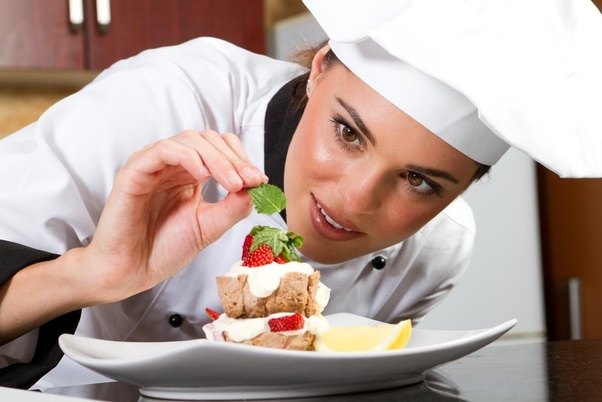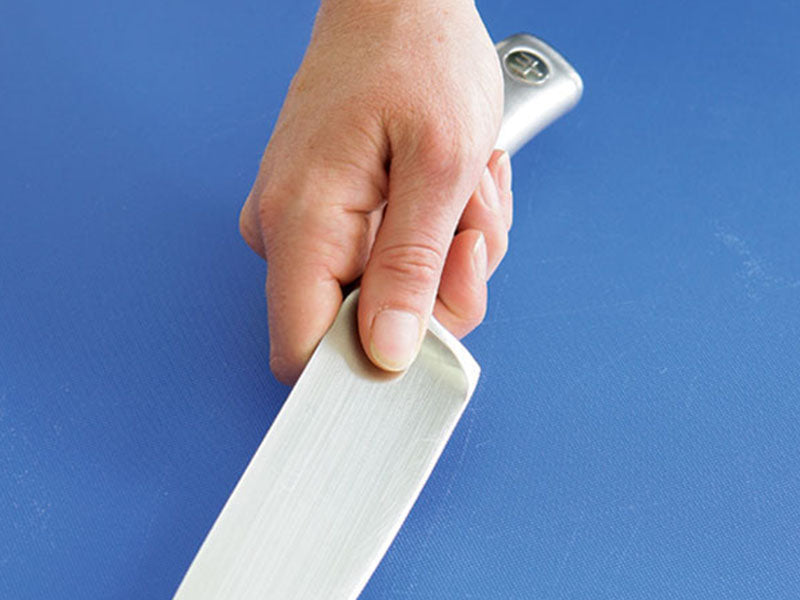If you’re just getting started in the kitchen, you may feel overwhelmed or intimidated, but remember that cooking is like anything else.
Learn How to Cook: 11 Skills Every Amateur Chef Should Know
The more you practice, the better you will become. Feel like you’re too far behind to ever catch up? It’s never too late to tie on that apron and learn how to whip up a chunky flavorful soup or cheesy baked enchiladas. After all, Julia Child didn’t learn how to cook until she was in her 50s!
When you’re new to the world of pots and pans, paring knifes and strainers, and peelers and spatulas, start by mastering these beginner cooking skills. From there, build your foundation and expand your culinary repertoire by experimenting with dishes and recipes that interest you. Here are the basic building blocks every amateur home chef should learn.
1. HOW TO READ A RECIPE
A well-written recipe is straightforward, easy to follow, and inspirational. Recipes have two sections: a list of ingredients and a list of steps that teach the reader how to make the dish. The ingredients are always listed in order of use in the recipe. If 2 tablespoons butter and 1/2 cup finely minced celery are the first two ingredients, you will use these two elements first when making the dish.
It’s always a good idea to read the recipe before you begin cooking, and I don’t mean five minutes beforehand—I’m talking the moment you decide you want to make the item. If you start to make a pork recipe that requires three hours of braising at 7:30 p.m., you won’t be eating dinner until 10:30. Or what if you’ve found a great recipe for fajitas and plan to serve them in an hour? Only when you get to step four of the recipe will you realize the meat must be marinated overnight. Avoid these novice mistakes by reading the recipe all the way through early on.
2. HOW TO COOK PASTA

Yes, you probably know that to make pasta: You bring a large pot of salted water to a boil, and then you throw in the pasta and boil for the allotted time listed on the pasta package’s directions. But did you know that you should always cook the pasta in the sauce once it’s been boiled? This is the authentic Italian way of making pasta. Instead of straining the pasta, use tongs or a large slotted spoon to scoop the cooked pasta out of the boiling water. Dump it directly into the cooking sauce and toss everything together. If the sauce needs thinning, add some of the leftover pasta cooking water. The sauce will coat the pasta, and everything will come together in the most scrumptious way.
3. HOW TO PROPERLY SLICE AND DICE AN ONION
Yes, there is a technique to it! This method can be used for other vegetables like shallots or potatoes. Understand it and you’ll feel comfortable using a knife. For the best results, use a super-sharp knife.
4. HOW TO SEASON
Proper seasoning is essential to making food taste good. A liberal sprinkling of salt and healthy grind of fresh-cracked pepper should be added to virtually everything you make from pasta carbonara to roast tilapia. Don’t be afraid of experimenting with other seasonings: Ground nutmeg enhances white sauces and bitter greens, smoked paprika adds depth to soups and rice dishes, and cumin brings a Mexican flair to beans and meat.
5. HOW TO ROAST VEGETABLES

Some people prefer steamed or blanched vegetables as side dishes or tossed into salads, but a smart home cook knows that the most flavor comes from roasting. Preheat your oven to 400°F. Cover a cookie sheet with parchment paper. Place the vegetables (cut into chunks or broken into smaller pieces) on the parchment, and use your hands to simply toss with olive oil, salt, and fresh black pepper. Once every piece is lightly coated in oil, spread in one even layer on the baking sheet, and pop it into the oven. Vegetables like broccoli, onions, mushrooms, and peppers cook in 15 to 20 minutes. Heartier root vegetables like potatoes, Brussels sprouts, carrots, and butternut squash take longer to roast—about 40 to 50 minutes.
6. HOW TO SCRAMBLE EGGS
There are five basic preparations of eggs: poached, boiled, baked, omelette, and, finally, scrambled (the simplest of the methods). To make scrambled eggs, crack eggs in a bowl and whisk until very frothy. Cook slowly in melted butter over medium heat, stirring often. Be creative when it comes to mix-ins! Use cheese (cheddar, gruyère, goat), vegetables (mushrooms, tomatoes, red peppers), cooked meats (sausage, ham, chorizo), and fresh herbs (parsley, thyme, chives) in countless combinations.
7. HOW TO SERVE A WHOLE ROAST CHICKEN

One of the most impressive dishes a home cook can and should master is roast chicken. It’s a comforting dish that almost everyone loves, and it truly is very uncomplicated to make. Start by buying the best chicken you can afford. Make sure it’s dry, and season it generously with salt and pepper. Rub it with butter or oil, and place in a pan. If you’re concerned about presentation, tie the legs together with kitchen string, and throw some rosemary, garlic, and lemon into the pan. Roast for an hour to 90 minutes at 400°F. After an hour, stick a thermometer in the chicken; it’s cooked at 165°F. Remove, and let rest for 10 to 15 minutes. Carve and serve.
8. HOW TO COOK RICE AND QUINOA
For both white rice and quinoa, bring a saucepan filled with a certain amount of water (the amount depends on the quantity of rice or quinoa you are cooking) to a boil. When it’s boiling pour in the grain, stir, and reduce the heat to a simmer. Cover and cook for 16 to 18 minutes (rice) or 12 to 15 minutes (quinoa). When all the liquid is absorbed, fluff and enjoy. Brown and wild rice varieties take longer to cook. Most packages have easy-to-follow instructions with water to rice ratios and cook time. However, you can’t beat Alton Brown’s baked brown rice recipe. I’ve used it hundreds of times, and it always makes perfectly cooked, scrumptious brown rice.
9. HOW TO MAKE A WARM MELT-Y SANDWICH

There’s nothing worse than a grilled cheese sandwich that doesn’t have gooey melted cheese—it’s practically a crime! There are two important factors to making a good melted sandwich with crisp bread on the outside and hot melted cheese on the inside. The first is to use grated cheese instead of sliced; grated cheese simply melts better and quicker than sliced cheese. The second is to cook the sandwich over medium heat. This ensures that the bread won’t get too crispy before the cheese has melted. Like with scrambled eggs, think big when it comes to fillings: Virtually any cheese, meat, or vegetable can be layered into a melted sandwich. Note that this technique can also be used to cook quesadillas.
10. HOW TO SEAR PROTEIN
Searing steaks and certain types of seafood, like scallops and salmon, in a skillet over a high temperature yields a flavorful crust and scrumptious skin. Heat oil in a skillet until just smoking hot. Add the steaks and leave them in the pan. It’s crucial that you do not move them around. Place them in the pan and do not touch them for a few minutes. Once the meat is seared, it will gently pull itself away from the pan and be ready to flip.
11. HOW TO SHAKE A COCKTAIL

When making a cocktail, always measure out the ingredients and pour into a cocktail shaker, and then add ice. If you add the ice before measuring out the spirits, your drink may become diluted—especially if you get distracted by a phone call or text conversation half way through making the beverage. After you’ve got the ice in the tin, shake vigorously for at least 30 seconds until there’s condensation on the outside of the tin. Strain the liquid into a glass, and enjoy immediately.



Leave a comment
This site is protected by hCaptcha and the hCaptcha Privacy Policy and Terms of Service apply.